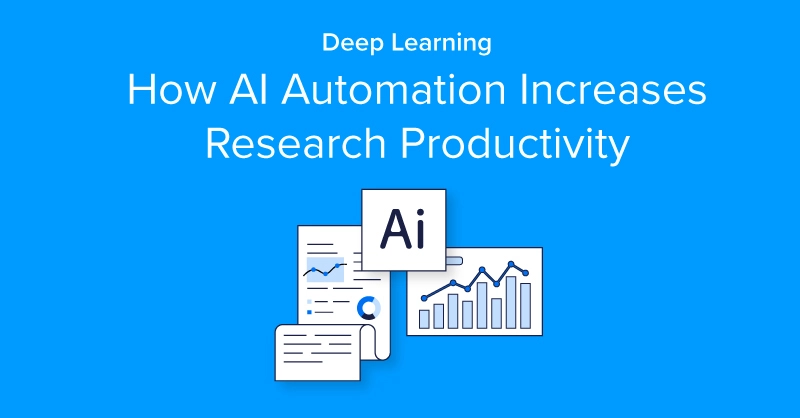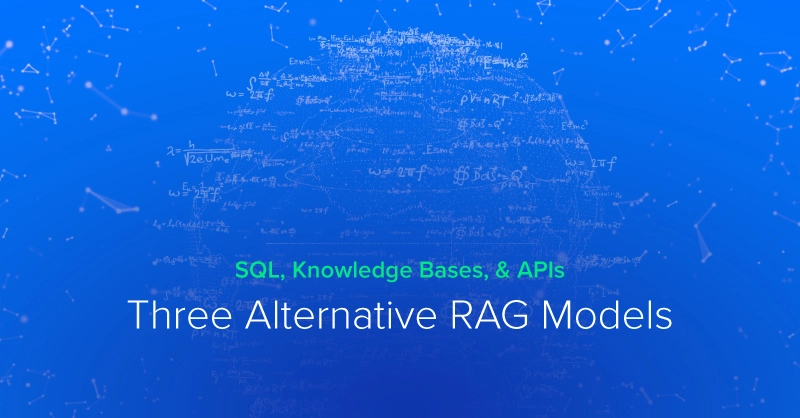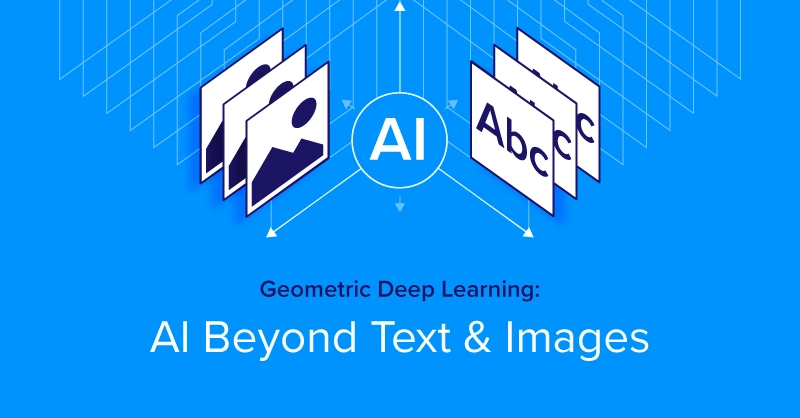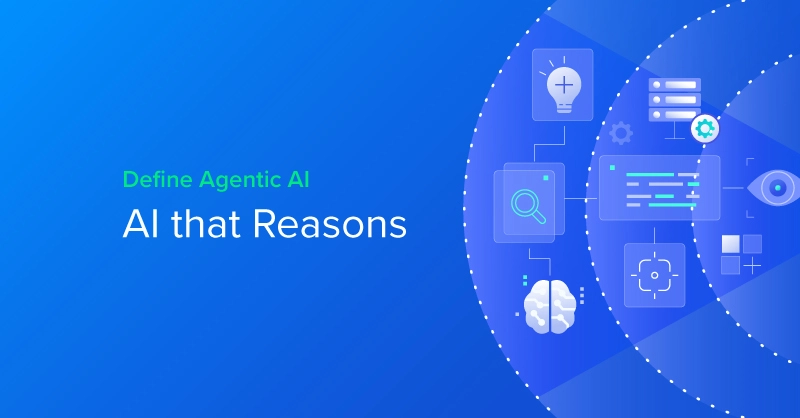
How Computer Vision Can Help Fight Climate Change
One can only assume that as AI is utilized in more industries and fields of study that it is a matter of time before AI, specifically computer vision, is used to tackle climate change. However, the details leave us wondering exactly how computer vision research can assist mankind in bringing about a better tomorrow.
There are any number of ways artificial intelligence can be used to fight climate change. Some AI programs are created to optimize the energy efficiency of homes and businesses, while others can monitor for and prevent the catastrophic failures of energy plants to reduce carbon emissions.
Creating computer vision programs allows for other AI programs to see in more detailed and realistic ways to fight climate change at a whole new level. For companies and individuals looking to reduce carbon emissions, computer vision can help fight climate change in ways they likely never thought possible.
Let's first take a look at how AI is already assisting in efforts to mitigate climate change.
How Does AI Help Fight Climate Change?
As mentioned above, there are several ways AI programs can be used to help fight climate change. Some of these are in practice today while others are still being tested to see if they are viable for a full-scale rollout. Others yet are still in the earliest stages of development.
However, AI is proving useful in environmental sciences and further implementation in fighting climate change is inevitable. Rather than create an exhaustive list, we have broken AI involvement into these three broad categories: monitor and detect, manage, and advance.
Interested in a workstation for computer vision research?
Learn more about Exxact workstations built to accelerate AI development.
AI Helps Monitor and Detect Climate Change
Artificial intelligence has found wide adoption in monitoring current systems in order to "raise a red flag" if problems are detected, as well as to suggest new ways to optimize processes.

A basic example is the ability AI has to track individual and commercial carbon emissions and then to suggest appropriate changes to mitigate some of these emissions.
It goes beyond this, though, in being able to help sustainable farmers and sustainable livestock flourish with up-to-date and accurate weather pattern tracking. When produce and livestock are able to be maximized naturally by taking advantage of (or preventing a catastrophe from) changes in the weather, then even the food we consume can be used to fight climate change.
AI, of course, can also be used to analyze massive amounts of data and generate results about changes in climate patterns and, using the same data, predict future changes in climate patterns.
AI Helps Manage Emissions and Waste
When carbon emissions can be more accurately monitored and predicted, then those emissions can be managed.
Humans produce a lot of waste, both biological and manufactured, that is not properly or efficiently disposed of. AI has been used to help increase efficiency in waste management with sensors and live updates on waste in cities for more accurate waste collection as well as a determination for destruction or removal.
This has huge benefits for not only controlling waste more efficiently but also optimizing vehicle emissions used to collect this waste.
AI Helps Create Advancements In Environmental Technologies
AI can do much more than just observe data and generate suggestions. Deep learning and neural networks are able to actually generate potential solutions and tackle creative problems and tasks.
Environmental scientists have been using AI to create and generate advancements in technologies for a long time.

One such technological advancement to fight climate change is with AI predicting weather patterns and having full control to adjust ground-based solar panels to account for upcoming weather and changes in cloud cover that might hinder the panels. Panels can be repositioned to maximize energy yield and protected from inclement weather. This helps streamline the process to create clean, solar energy to reduce carbon emissions generated by electricity, and reduce overall costs to maintain this energy source making it more attractive as an affordable alternative to fossil fuels.
Advancements like these have been making AI a valuable partner in fighting climate change.
What Is Computer Vision and How Does It Work?
Computer vision is a branch of artificial intelligence with the ability to "see." By extracting useful information from digital photos, videos, or other visual inputs computer vision programs can see and react to visual information, making decisions based on what it sees, much like how humans process visual information.

Most AI programs can only "see" data, but with computer vision, these programs are able to take in more information and comprehend at an even higher level.
Computer vision is only as powerful as the AI program that trained it to understand what it is seeing. Human eyes have years of practice taking in visual information and interpreting what is being seen. Computer vision has to go through the same process to be able to correctly comprehend what visual information is being presented, and can suffer from bias or errors based on the data it is fed.
This means that computer vision AI requires a lot of data. It learns by repeating data analysis until it detects distinctions and, eventually, recognizes images. For example, to teach an AI program to recognize fire, it must be fed a large number of images related to fire in order for it to be able to see and interpret various types and stages of fire to understand and differentiate images.
By repeating this process, an AI program can come to learn to see different environmental factors and make judgments based on what visual information it is interpreting. This opens up the possibility for computer vision AI to perform any number of different roles in helping to fight climate change.
How Computer Vision Can Help Fight Climate Change
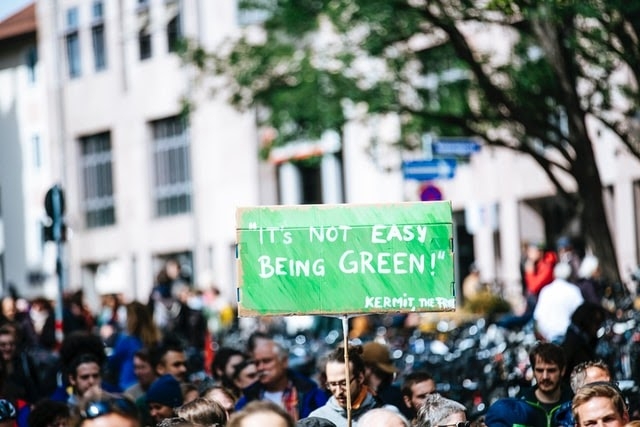
As we mentioned earlier, AI can help monitor and detect, manage, and advance environmental science technology to help fight climate change. The computer vision field of AI can also help even more with the added ability to be able to see and comprehend complex visual data that might take humans months or years to notice on their own.
Computer Vision Can Monitor and Detect Climate Shifting Factors
Computer Vision that is equipped to recognize specific environmental factors that are directly linked to climate change, like temperature differentials, changes in weather patterns, precipitation alterations, and more can make significant strides in combatting climate change. This type of equipment uses a variety of cameras and sensors specially designed for these tasks.
By monitoring patterns that might otherwise elude the naked eye, by constant and consistent observation beyond human capability, computer vision programs can detect subtle shifts that may be a result of climate change. With a comprehensive computer vision system, researchers and scientists can find new ways to better manage factors that can affect our climate and environment.

How Computer Vision Can Manage Climate Change Factors
One of the biggest benefits of utilizing AI in the fight against changes in Earth's climate is the ways in which AI can detect and even suggest ways to reduce carbon emissions.
One creative way to use computer vision to fight climate change is to be able to monitor and manage certain factors such as traffic flow.
With computer vision programs that can see when intersections are becoming congested and change traffic lights in a way that optimizes the flow of traffic, then vehicles can be in operation for less time, which means it can effectively reduce carbon emissions from vehicles and traffic jams.
A city-wide implementation of a system like this, or at least in heavily-congested areas, can lead to a significant reduction in a city’s carbon footprint.
Computer Vision to Advance Climate Change Technology
While computer vision can become a major player in managing climate change factors, it can make the most impact when working to advance current technologies.
In many areas of the world, power grids can be finicky at best and dangerous at worst. They can often be difficult to manage with various environmental factors causing some to be more of a liability than others. Areas that experience frequent flooding, for example, are at risk of creating dangerous situations for people and the environment alike.
Computer vision can help fight climate change by managing and improving these systems. With the ability of AI programs to distribute electricity and power where needed, and reduce power flow when it isn’t needed, combined with computer vision to see weather patterns in the surrounding area, an AI program can monitor for potential dangers, detect when a particular part of the grid is in danger, and manage the systems to shut off power to avoid catastrophic failures.
This can also be helpful in areas affected by severe drought and wildfires. If computer vision could be used to cut the power to areas being hit by severe weather and monitor power surges and other spark-inducing problems, this could potentially stop a fire before it starts and causes massive damage and environmental pollution.
This advance in AI technology can fight climate change by reducing the carbon emissions of the area, of course, but can also prevent further damage to the environment and the people using this power by mitigating risks where systems within the power grid may overload, discharge, or, worst of all, explode or otherwise cause destruction.
Looking For More Information On AI?
Computer vision can help fight climate change in a variety of ways and is only limited by our capacity to use the technology creatively and sufficiently integrate computer vision to advance current systems.
If you have other thoughts on how AI can help keep our climate in check please feel free to discuss in the comments section below.
Have any questions?
Contact Exxact Today

How Computer Vision Can Help Fight Climate Change
How Computer Vision Can Help Fight Climate Change
One can only assume that as AI is utilized in more industries and fields of study that it is a matter of time before AI, specifically computer vision, is used to tackle climate change. However, the details leave us wondering exactly how computer vision research can assist mankind in bringing about a better tomorrow.
There are any number of ways artificial intelligence can be used to fight climate change. Some AI programs are created to optimize the energy efficiency of homes and businesses, while others can monitor for and prevent the catastrophic failures of energy plants to reduce carbon emissions.
Creating computer vision programs allows for other AI programs to see in more detailed and realistic ways to fight climate change at a whole new level. For companies and individuals looking to reduce carbon emissions, computer vision can help fight climate change in ways they likely never thought possible.
Let's first take a look at how AI is already assisting in efforts to mitigate climate change.
How Does AI Help Fight Climate Change?
As mentioned above, there are several ways AI programs can be used to help fight climate change. Some of these are in practice today while others are still being tested to see if they are viable for a full-scale rollout. Others yet are still in the earliest stages of development.
However, AI is proving useful in environmental sciences and further implementation in fighting climate change is inevitable. Rather than create an exhaustive list, we have broken AI involvement into these three broad categories: monitor and detect, manage, and advance.
Interested in a workstation for computer vision research?
Learn more about Exxact workstations built to accelerate AI development.
AI Helps Monitor and Detect Climate Change
Artificial intelligence has found wide adoption in monitoring current systems in order to "raise a red flag" if problems are detected, as well as to suggest new ways to optimize processes.

A basic example is the ability AI has to track individual and commercial carbon emissions and then to suggest appropriate changes to mitigate some of these emissions.
It goes beyond this, though, in being able to help sustainable farmers and sustainable livestock flourish with up-to-date and accurate weather pattern tracking. When produce and livestock are able to be maximized naturally by taking advantage of (or preventing a catastrophe from) changes in the weather, then even the food we consume can be used to fight climate change.
AI, of course, can also be used to analyze massive amounts of data and generate results about changes in climate patterns and, using the same data, predict future changes in climate patterns.
AI Helps Manage Emissions and Waste
When carbon emissions can be more accurately monitored and predicted, then those emissions can be managed.
Humans produce a lot of waste, both biological and manufactured, that is not properly or efficiently disposed of. AI has been used to help increase efficiency in waste management with sensors and live updates on waste in cities for more accurate waste collection as well as a determination for destruction or removal.
This has huge benefits for not only controlling waste more efficiently but also optimizing vehicle emissions used to collect this waste.
AI Helps Create Advancements In Environmental Technologies
AI can do much more than just observe data and generate suggestions. Deep learning and neural networks are able to actually generate potential solutions and tackle creative problems and tasks.
Environmental scientists have been using AI to create and generate advancements in technologies for a long time.

One such technological advancement to fight climate change is with AI predicting weather patterns and having full control to adjust ground-based solar panels to account for upcoming weather and changes in cloud cover that might hinder the panels. Panels can be repositioned to maximize energy yield and protected from inclement weather. This helps streamline the process to create clean, solar energy to reduce carbon emissions generated by electricity, and reduce overall costs to maintain this energy source making it more attractive as an affordable alternative to fossil fuels.
Advancements like these have been making AI a valuable partner in fighting climate change.
What Is Computer Vision and How Does It Work?
Computer vision is a branch of artificial intelligence with the ability to "see." By extracting useful information from digital photos, videos, or other visual inputs computer vision programs can see and react to visual information, making decisions based on what it sees, much like how humans process visual information.

Most AI programs can only "see" data, but with computer vision, these programs are able to take in more information and comprehend at an even higher level.
Computer vision is only as powerful as the AI program that trained it to understand what it is seeing. Human eyes have years of practice taking in visual information and interpreting what is being seen. Computer vision has to go through the same process to be able to correctly comprehend what visual information is being presented, and can suffer from bias or errors based on the data it is fed.
This means that computer vision AI requires a lot of data. It learns by repeating data analysis until it detects distinctions and, eventually, recognizes images. For example, to teach an AI program to recognize fire, it must be fed a large number of images related to fire in order for it to be able to see and interpret various types and stages of fire to understand and differentiate images.
By repeating this process, an AI program can come to learn to see different environmental factors and make judgments based on what visual information it is interpreting. This opens up the possibility for computer vision AI to perform any number of different roles in helping to fight climate change.
How Computer Vision Can Help Fight Climate Change

As we mentioned earlier, AI can help monitor and detect, manage, and advance environmental science technology to help fight climate change. The computer vision field of AI can also help even more with the added ability to be able to see and comprehend complex visual data that might take humans months or years to notice on their own.
Computer Vision Can Monitor and Detect Climate Shifting Factors
Computer Vision that is equipped to recognize specific environmental factors that are directly linked to climate change, like temperature differentials, changes in weather patterns, precipitation alterations, and more can make significant strides in combatting climate change. This type of equipment uses a variety of cameras and sensors specially designed for these tasks.
By monitoring patterns that might otherwise elude the naked eye, by constant and consistent observation beyond human capability, computer vision programs can detect subtle shifts that may be a result of climate change. With a comprehensive computer vision system, researchers and scientists can find new ways to better manage factors that can affect our climate and environment.

How Computer Vision Can Manage Climate Change Factors
One of the biggest benefits of utilizing AI in the fight against changes in Earth's climate is the ways in which AI can detect and even suggest ways to reduce carbon emissions.
One creative way to use computer vision to fight climate change is to be able to monitor and manage certain factors such as traffic flow.
With computer vision programs that can see when intersections are becoming congested and change traffic lights in a way that optimizes the flow of traffic, then vehicles can be in operation for less time, which means it can effectively reduce carbon emissions from vehicles and traffic jams.
A city-wide implementation of a system like this, or at least in heavily-congested areas, can lead to a significant reduction in a city’s carbon footprint.
Computer Vision to Advance Climate Change Technology
While computer vision can become a major player in managing climate change factors, it can make the most impact when working to advance current technologies.
In many areas of the world, power grids can be finicky at best and dangerous at worst. They can often be difficult to manage with various environmental factors causing some to be more of a liability than others. Areas that experience frequent flooding, for example, are at risk of creating dangerous situations for people and the environment alike.
Computer vision can help fight climate change by managing and improving these systems. With the ability of AI programs to distribute electricity and power where needed, and reduce power flow when it isn’t needed, combined with computer vision to see weather patterns in the surrounding area, an AI program can monitor for potential dangers, detect when a particular part of the grid is in danger, and manage the systems to shut off power to avoid catastrophic failures.
This can also be helpful in areas affected by severe drought and wildfires. If computer vision could be used to cut the power to areas being hit by severe weather and monitor power surges and other spark-inducing problems, this could potentially stop a fire before it starts and causes massive damage and environmental pollution.
This advance in AI technology can fight climate change by reducing the carbon emissions of the area, of course, but can also prevent further damage to the environment and the people using this power by mitigating risks where systems within the power grid may overload, discharge, or, worst of all, explode or otherwise cause destruction.
Looking For More Information On AI?
Computer vision can help fight climate change in a variety of ways and is only limited by our capacity to use the technology creatively and sufficiently integrate computer vision to advance current systems.
If you have other thoughts on how AI can help keep our climate in check please feel free to discuss in the comments section below.
Have any questions?
Contact Exxact Today

